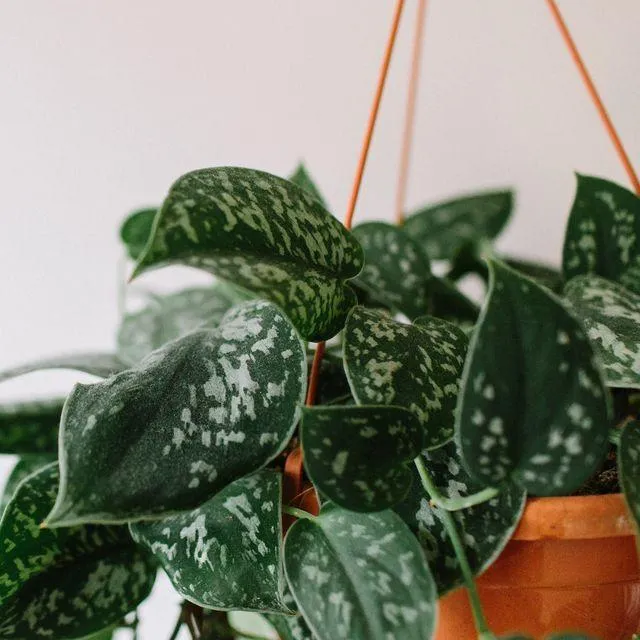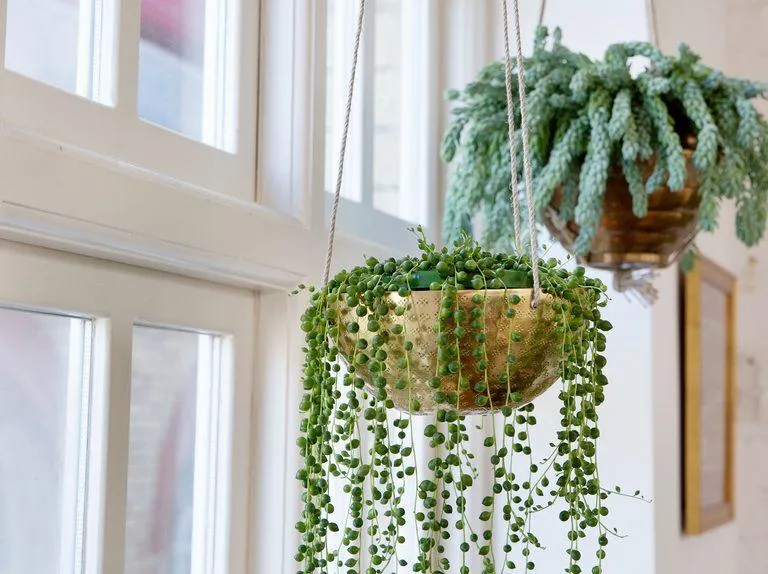The Many Benefits of Cascading Plants Indoors
If you’re looking to add some greenery to your indoor spaces but don’t have much room for plants, cascading plants are a great option to consider. From ivy and pothos to tradescantia and spider plants, these trailing varieties can soften hard surfaces and fill vertical spaces with lush foliage. In this article, I’ll explore some of the top cascading plant choices for indoor use and share tips for caring for them based on my own experience as a gardener.
What are Cascading Plants?
Cascading plants, also called trailing plants, are varieties that grow horizontally or allow their stems to hang downwards, forming a cascade effect. Their flexible vines or stems can snake around or spill over the sides of their containers. This makes them well-suited for spaces with high ceilings, shelves, staircases, or any area where a plant’s shape is important. Whether mounted on a wall, hanging from above, or tumbling over the edges of a pot, cascading plants are very design-flexible.
Benefits of Growing Cascading Plants Indoors
There are several perks to incorporating cascading plants among your indoor greenery:
- Adds visual interest. The winding, flexible vines produce a dramatic shape that draws the eye upwards or allows foliage to spill dramatically over the sides of a planter.
- Softens hard surfaces. Cascading foliage can gently drape and cover bare walls, shelves, or other surfaces for a lush, natural touch.
- Fills awkward spaces. Their ability to grow vertically or horizontally makes them perfect for odd nooks and crannies where traditional upright plants won’t fit.
- Air purification. Many cascading varieties, like English ivy and pothos, are excellent at removing indoor toxins like formaldehyde, benzene, and trichloroethylene.
- Low maintenance. In general, cascading plants are fairly low-effort to care for and more forgiving of occasional neglect than fussier houseplants.
From my experience growing a variety of indoor plants, trailing vines add depth, movement, and visual interest to small or bare spaces. Their flexibility means they can essentially be trained or directed to grow wherever you need a plant.
Top Cascading Plant Choices for Indoors
Here are some of the best cascading plant varieties for indoor conditions, along with some tips on care based on personal hit-or-miss experiences over the years:

English Ivy (Hedera helix)
One of the easiest and most foolproof cascading plants is English ivy. Its waxy, deep green leaves spread quickly across surfaces to cover spaces. Ivies thrive on neglect – they’re basically indestructible as long as their soil stays moist. Simply train the stems onto trellises or let it spill over the sides of hanging planters. Give it sunlight or low light. Snip off any plantlets that emerge on the vines to keep its shape full.
Pothos or Devil’s Ivy (Epipremnum aureum)
Pothos is the quintessential low-maintenance office plant. Its heart-shaped leaves come in both solid green or variegated shades. Allow the vines to cascade freely down and around or you can tie individual stems onto surfaces for structure. Water when the soil slightly dries. Pothos is very forgiving of mistakes – I’ve brought it back from the brink of crunchy, half-dead leaves more than once with just water. It tolerates low light, too.
Trailing Jade (Portulacaria afra)
With its thicket of fleshy, spoon-shaped leaves along arching stems, trailing jade has a fun, tropical vibe. Give it bright, indirect light and only water when the soil surface starts to dry. Unlike English ivy or pothos, trailing jade prefers drier conditions to prevent root rot. Allow stems to cascade over the sides of hanging planters or winding pots. Its leaves sometimes shed, but new growth will continue to fill out the plant.
Spider Plant (Chlorophytum comosum)
Spider plants are awesome low-light plants that trail gracefully. Their long, thin green leaves have white stripes or spots. Baby plantlets will form at the end of leaf stems which you can remove to propagate new plants. These were my grandma’s favorite! Water only when the soil is dry. Give them indirect sunlight and enjoy their low-fuss nature. Spider plants are pretty tough customers that survive most care mistakes.
Wandering Jew (Tradescantia zebrina)
With strappy green-and-purple leaves, wandjew is fairly easygoing as long as you don’t overwater. Give it filtered sun and allow it to cascade down shelves, hanging baskets, or out of pots. Its colorful leaves make a bold statement. Tie individual stems to a trellis or string if you want a more structured look. Water only when the top inch of soil dries to prevent root rot issues. I find these guys beautiful but a little fickle – they sulk if soil stays soggy.

Golden Pothos (Epipremnum aureum ‘Marble Queen’)
A variegated cultivar of pothos, ‘Marble Queen’ has striking yellow and green splashed leaves. Like its cousin, it’s a very hardy climber perfect for trailing. Give it bright, indirect light and keep soil lightly moist. The variegation sometimes causes solid green reversions, but regular pruning keeps it looking its best. In my experience, marble queen thrives on neglect and cleans the air effectively despite lazier care.
Caring for Cascading Plants
While cascading plants tend to be very low maintenance overall, here are some general tips to keep them thriving based on learning through trial and error in my home:
- Water them when the top 1-2 inches of soil feels dry.
- Mist foliage occasionally to boost humidity and clean dust.
- Prune off any browned or wilted leaves regularly.
- Repot only when roots emerge from the drainage holes.
- Give them bright, indirect sunlight on a windowsill or under grow lights.
- Rotate pots every few weeks so all sides receive light.
- Fertilize weakly every few months in the growing season.
- Propagate new plants by rooting stem cuttings in water or soil.
With just basic care, cascading plants can liven up indoor spaces for months or years to come. Their drama, flexibility, and easy temperaments make them fantastic additions if you want living decoration without too much fuss. From filling in awkward corners to softening bare walls, trailing greenery adds life and visual interest wherever it’s placed. So give one or several a try – you may be amazed at how they brighten up your home!
I hope this overview of cascading plants was helpful for understanding their benefits and care. Please let me know if you have any other questions! Wishing you the best in choosing perfect vines and soil-covering beauties for your indoor jungle.
Top Indoor Cascading Plants
| Plant | Light Needs | Watering | Care Level |
|---|---|---|---|
| Pothos | Low to Bright Indirect | Allow soil to dry slightly | Easy |
| Devil’s Ivy | Low to Bright Indirect | Water when top inch of soil is dry | Easy |
| Swedish Ivy | Low to Medium Indirect | Water when top inch of soil is dry | Easy |
| Spider Plant | Low to Bright Indirect | Allow soil to dry out between waterings | Easy |
| Wandering Jew | Medium to Bright Indirect | Water when top inch of soil is dry | Easy |
FAQ
-
What types of plants can I grow indoors?
Lots of plants basically thrive when grown inside. Some good choices are pothos, philodendron, succulents, snake plants, peace lilies, English ivy and Chinese evergreen.

-
How much sunlight do indoor plants need?
Most indoor plants need moderate sunlight. At the same time, direct sunlight may scorch some plants. Place plants in bright areas near windows that get morning or afternoon sun. You can move plants partly into the shade if leaves start to yellow.
-
How often should I water indoor plants?
Properly watering indoor plants takes some trial and error to figure out how much water different plants need. As a basic rule, check soil moisture by sticking your finger in the soil. If it feels dry about 1 inch down, it’s time to water. Controlled release fertilizers help feed plants between waterings.
-
What are some common problems with indoor plants?
Pests like spider mites or gnats are the bane of indoor gardeners. Quarantine new plants and treat with Neem oil or insecticidal soap if needed. Overwatering is another issue – allow soil to dry between waterings. Underwatering leads to brown crispy plants. Monitoring plant needs takes some practice.
-
How can I get my indoor plants to look fuller?
Propagation basically allows you to get more plants without much effort or cost. Many indoor plants propagate easily from stem or leaf cuttings. Put the clippings in water until roots form, then transplant. You can also grup plants together attractively on poles or in hanging pots and baskets for a lush look.
-
“Do indoor plants really improve air quality?”
Studies reveal indoor plants can indeed cleanse air naturally. Spider plants, peace lilies, and English ivy rank among NASA’s top air-filtering plants. The jury is sort of still out on the exact impact, but having live green things indoors certainly wouldn’t hurt air quality. Even if just for their beauty, plants can enhance any indoor space.

-
“What’s the coolest indoor plant to grow?”
Staghorn ferns and airplane plants have an awesome/amazing structure that’s totally unique. Philodendron and pothos varieties come in striking colors and patterns unlike typical green foliage. Bromeliads like billbergias produce colorful bracts. For cool factor, consider carnivorous plants too – who wouldn’t find Venus flytraps or pitcher plants totally rad? Although they might eat bugs, not people. Probably.
-
Any advice for plant beginners?
Watch your watering if just starting an indoor garden. Underwatering is safer than overwatering. Choose easy plants to care for, like pothos or snake plants. Put them in bright spots with indirect light. Follow basic guidelines, but don’t get bogged down by rules if plants seem happy. Ask friends for plant trimmings – propagation is fun and builds confidence. Consider designing spaces for indoors like you see outdoors – arrange plants attractively for year-round color and greenery.
